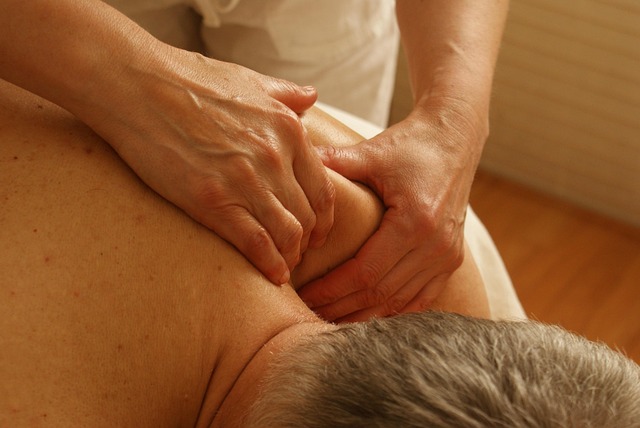PRP injections for joint arthritis harness body's natural healing power using growth factors from platelets to expedite recovery and alleviate pain in athletes. By injecting concentrated plasma into affected joints, PRP can significantly improve function, offer long-lasting relief, and potentially delay the need for surgery. For osteoarthritis and rheumatoid arthritis sufferers, this natural alternative shows promise in managing joint pain and promoting tissue repair.
“Discover the revolutionary power of PRP injections in accelerating sports injury recovery. This comprehensive guide explores how Platelet-Rich Plasma (PRP) therapy is transforming athletic rehabilitation, particularly for joint arthritis sufferers. We demystify PRP injections, delve into their scientific basis, and outline the step-by-step recovery process. Understanding PRP’s effectiveness in treating common causes of joint arthritis can empower athletes to reclaim their active lifestyles.”
Understanding PRP Injections: A Basic Guide
PRP injections, or platelet-rich plasma injections, have gained significant attention in the sports medicine field as a promising treatment option for various injuries, particularly joint arthritis. This advanced therapeutic approach leverages the body’s natural healing mechanisms to accelerate and enhance the recovery process.
PRP injections involve extracting a small sample of a patient’s blood, processing it to concentrate platelets, which are rich in growth factors, and then injecting this concentrated plasma into the affected joint or area. These growth factors play a crucial role in stimulating tissue repair, promoting cell regeneration, and reducing inflammation. For athletes suffering from joint arthritis, PRP injections can provide relief by improving joint function, reducing pain, and potentially delaying the need for more invasive treatments or surgeries.
Joint Arthritis: Common Causes and Symptoms
Joint arthritis, a debilitating condition affecting millions worldwide, is characterized by inflammation and pain in one or more joints. It’s essential to understand its causes and symptoms, especially as athletes and active individuals are at higher risk. The most common types include osteoarthritis and rheumatoid arthritis. Osteoarthritis often arises from wear and tear over time, particularly in weight-bearing joints like knees and hips, resulting in damaged cartilage and bone-on-bone friction. Symptoms typically include joint stiffness, aching, and swelling, with pain worsening after physical activity or prolonged inactivity.
On the other hand, rheumatoid arthritis is an autoimmune disease where the body’s immune system attacks its own joints. This causes chronic inflammation, leading to joint deformity and severe pain. Unlike osteoarthritis, it can affect any joint but often begins in the hands, wrists, and feet. Symptoms include swelling, warmth, and tenderness in affected joints, along with fatigue and weight loss. Seeking medical advice early is crucial for managing arthritis, and PRP injections for joint arthritis have emerged as a promising treatment option, offering natural pain relief and potentially expediting recovery for athletes.
The Science Behind PRP's Effectiveness
The science behind Platelet-Rich Plasma (PRP) treatments revolves around its potential to accelerate tissue repair and regeneration. PRP is a natural substance derived from a patient’s own blood, concentrated with platelets that release growth factors. These growth factors play a pivotal role in healing by stimulating cells responsible for building new tissues. This process is particularly beneficial for athletes dealing with joint arthritis, as it can significantly reduce inflammation and promote the restoration of damaged cartilage and ligaments.
PRP injections for joint arthritis have gained traction due to their ability to offer a more natural approach to injury recovery. Unlike traditional treatments that may involve invasive surgeries or synthetic medications, PRP harnesses the body’s inherent healing mechanisms. Research suggests that the growth factors released by platelets can enhance collagen synthesis, a crucial component in connective tissue repair, potentially leading to improved joint stability and reduced pain over time.
Recovery Process and Post-Treatment Care
The recovery process with PRP (Platelet-Rich Plasma) therapy involves multiple steps designed to promote healing and alleviate symptoms associated with sports injuries, including joint arthritis. Initially, a small amount of the patient’s blood is drawn and processed in a special centrifuge to isolate the concentrated platelets rich in growth factors. These platelets are then injected into the affected area, such as a knee or shoulder, where they release bioactive substances that stimulate tissue repair and regeneration.
Post-treatment care is crucial for optimal results. Patients may experience mild discomfort or swelling at the injection site, which typically subsides within a few days. Physical therapy and specific exercises are often recommended to enhance blood flow, reduce stiffness, and restore joint mobility. Additionally, patients are advised on lifestyle modifications, such as rest, ice application, compression, and elevation (RICE), to manage pain and inflammation effectively while the body heals. Regular follow-up appointments allow healthcare professionals to monitor progress and make adjustments to the treatment plan if necessary.
PRP (Platelet-Rich Plasma) injections have emerged as a promising treatment option for athletes dealing with joint arthritis, offering a potential game-changer in sports injury recovery. By harnessing the body’s natural healing mechanisms, PRP injections can accelerate the repair of damaged joints and soft tissues, significantly reducing recovery times compared to traditional methods. As research continues to uncover the full extent of its benefits, PRP remains a valuable tool for athletes seeking to regain mobility and return to their peak performance with minimal side effects. For individuals suffering from joint arthritis, exploring PRP injections as part of their treatment plan could be a smart step towards efficient recovery.
